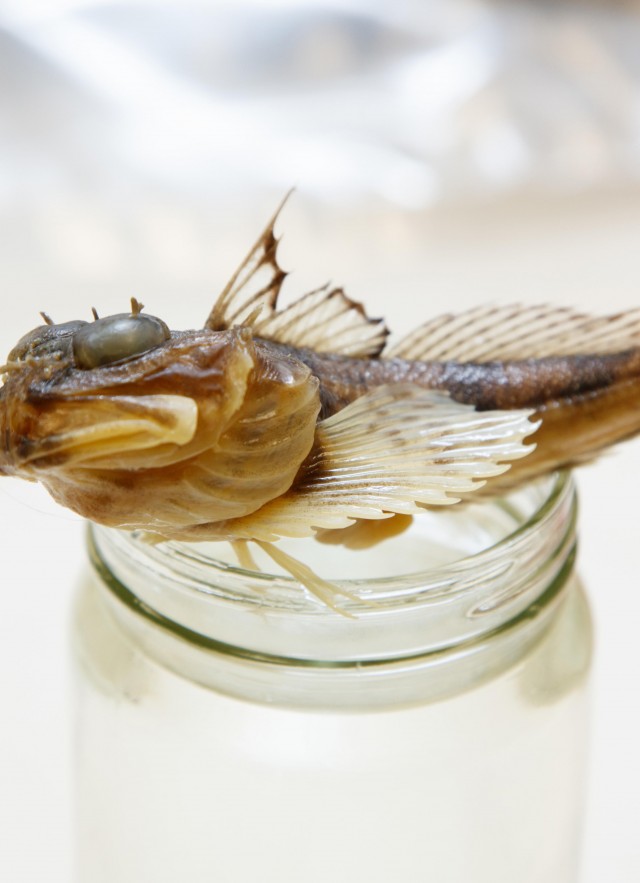

The Natural History Museum's fish collection is one of ten internationally recognized ichthyological collections in the United States. The collection contains nearly three million catalogued specimens, including representatives of most fish families. We also hold special collections of fish eggs and larvae, otoliths, frozen tissues, skeletons, cleared and stained specimens, and radiographs, in addition to an extensive book and reprint library.
Taxonomic strengths of the collection include deepsea, luminescent Stomiiformes (dragonfishes, viperfishes) and Myctophiformes (lanternfishes); freshwater Ostariophysi, particularly Siluriformes (catfish), Cypriniformes (carp), and Characiformes (characins); Anguilliformes (eels); Scorpaeniformes (scorpionfishes, lionfishes and stonefishes); and extensive holdings of Perciformes, particularly Gobiidae (gobies), Apogonidae (cardinalfishes), Blenniidae, Clinidae and Labrisomidae (blennies), Exocoetidae (flyingfishes), Labridae (wrasses), Pomacentridae (damselfishes), Scienidae (croakers), and Serranidae (basses).
Our geographic emphasis is the Pacific Rim, with particular strengths in fishes from the Eastern Pacific, Galapagos, Hawaiian, and Philippine islands, the Antarctic, and the freshwaters of North, Central, and South America.
Our collection has been used to study the systematics and taxonomy of many groups of fishes and to describe new species. We have many records and collections of rare, non-native, and introduced species, including new additions to the California fauna due to El Niño and other global events.
The collection is available in VertNet, iDigBio, and GBIF. Our institution code is LACM and our collection code is Fish.
A coelacanth, megamouth, and oarfish from our collection are on display around the Museum's grand foyer on the first floor. Read more here.